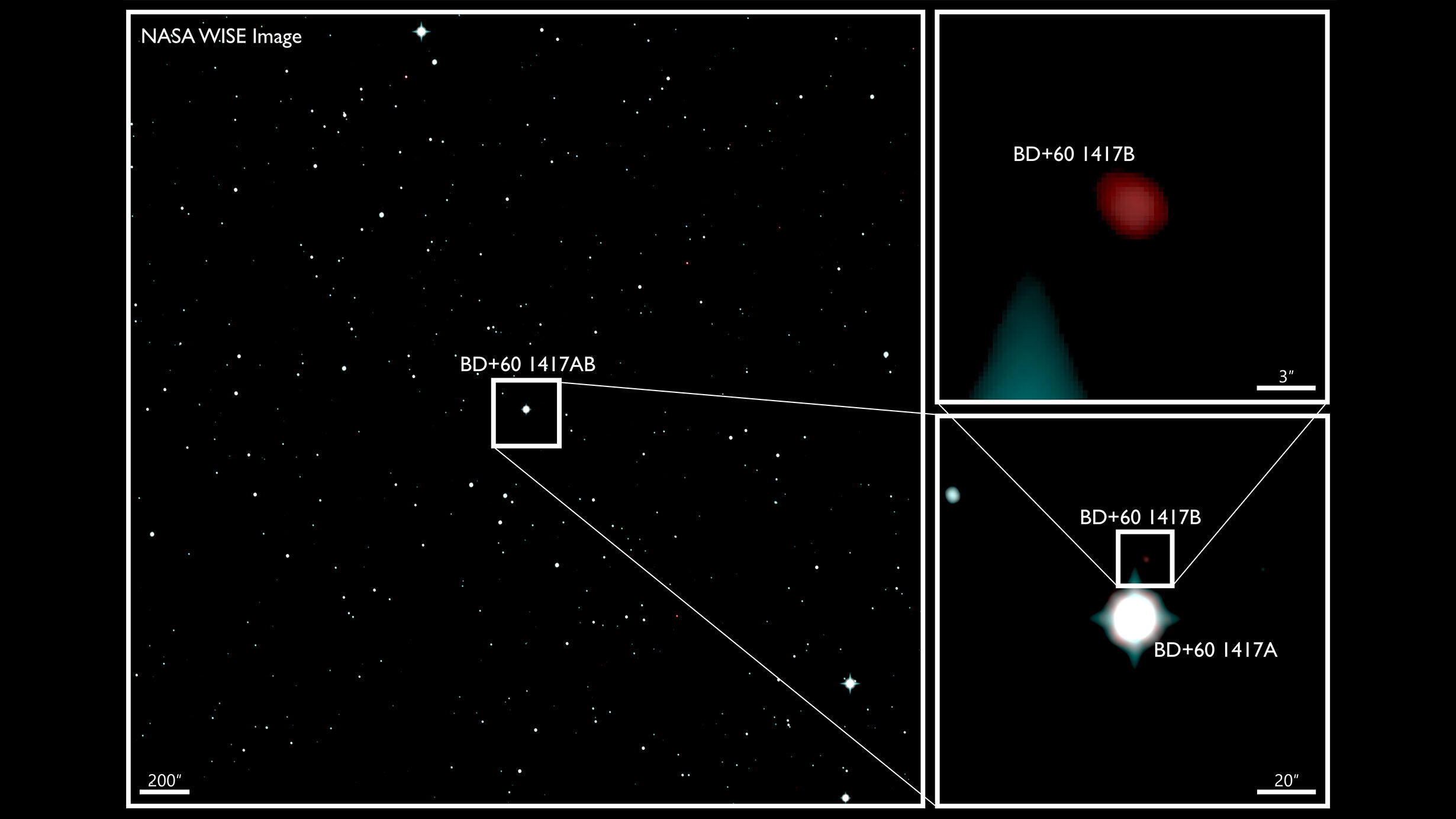Citizen Scientists Discover “Outlier” Distant World Missed By Previous Searches
by AMNH on
by AMNH on
 At left, the NASA WISE image of the BD+60 1417AB system. At right bottom is the host star and companion, and at top right is a zoom-in on the new low-mass world. The image is a color-composite from multiple WISE bands.
At left, the NASA WISE image of the BD+60 1417AB system. At right bottom is the host star and companion, and at top right is a zoom-in on the new low-mass world. The image is a color-composite from multiple WISE bands. A citizen scientist volunteer’s observation of a distant object has led to the identification of a new large planet or a small brown dwarf.
In 2018, Jörg Schümann, a volunteer with the Backyard Worlds: Planet 9 project, noticed an object that appeared to be moving with a star. Prior searches for exoplanets had missed the object because it was so distant from its host star, but in a new study, scientists show that it is likely a large planet or a small brown dwarf, a type of object that is not massive enough to burn hydrogen like true stars. Details about the new world are published today in The Astrophysical Journal.
“This star had been looked at by more than one campaign searching for exoplanet companions. But previous teams looked really close to the star,” said lead author Jackie Faherty, senior scientist in the American Museum of Natural History’s Department of Astrophysics and co-founder of the Backyard Worlds: Planet 9 project. “Because citizen scientists really liked the project, they found an object that many of these direct imaging surveys would have loved to have found, but they didn’t look far enough away from its host.”
Volunteers with Backyard Worlds search through nearly five years of digital images taken from NASA’s Wide-field Infrared Survey Explorer (WISE) mission to try to identify new worlds inside and outside of our solar system. Moving objects near Earth will appear to “jump” in the same part of the sky over the years, similar to an object “moving” in a flipbook. Users can then flag these objects for further study by scientists.
The new object is young and has a low mass, between 10 and 20 times the mass of Jupiter. This range overlaps with an important cutoff point—13 times the mass of Jupiter—which is sometimes used to distinguish planets from brown dwarfs. But scientists still aren’t sure how heavy planets can be, which can make relying on this cutoff challenging. “We don’t have a very good definition of the word ‘planet,’” said Faherty, who prefers the term “world.”
Another defining feature is how objects form: planets form from material gathering in disks around stars, while brown dwarfs are born from the collapse of giant clouds of gas, similar to how stars form. But the physical properties of this new object do not provide any clues to its formation. “There are hints that maybe it’s more like an exoplanet, but there’s nothing conclusive yet. However, it is an outlier,” said Faherty.
The object is also farther away from the star than expected based on its comparatively low mass—more than 1,600 times farther than the Earth is from the Sun. Few objects with such different masses from their host star have been found this far apart.
“You had an exoplanet community just staring so close to it,” said Faherty. “And we just pulled out a little, and we found an object. That makes me excited about what we might be missing in giant planets that might exist around these stars. Sometimes, you need to broaden your scope.”
Learn about NASA citizen science projects here.